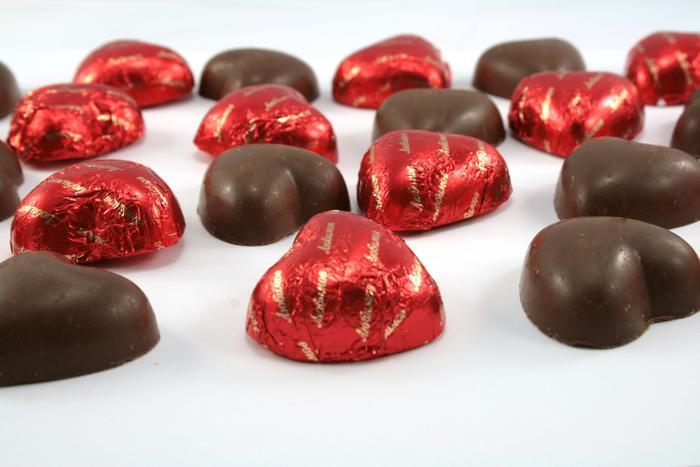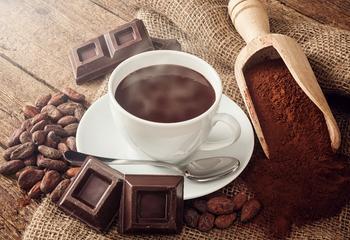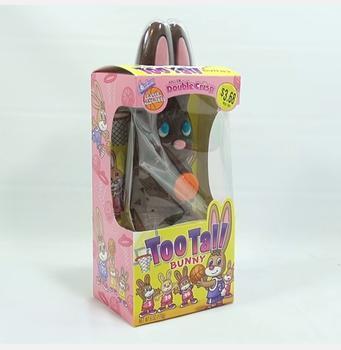Easy Chocolate Cocoa Candy Made With Confectionets Sugar

Chocolate lovers pay heed: Valentine's Day is this weekend, followed immediately by the annual post-Valentine's discounted-holiday-candy sale, meaning that your average American regardless of current love-life status is statistically likely to buy more chocolate than usual over these next few days.
But if you want chocolate, check to make sure the product you buy is actually chocolate, rather than "cocoa," "chocolaty" substance, "chocolate-flavored" candy or various other names slapped on products that do derive from the tropical-plant seeds known as "cacao beans" but are not actually "chocolate."
It's easy for ordinary people (as opposed to professional candy-makers) to get these products confused, because in everyday language we do tend to use words interchangeably: a certain winter drink might be called "hot chocolate" or "hot cocoa," for example.
Strict requirements
But professionals must be more precise. The Food and Drug Administration has extremely strict legal requirements which must be met before candy or ingredients can be sold as "chocolate" or "cocoa." And, as with all federal regulations, those requirements are incredibly wordy and specific.
The FDA lists 15 different subcategories under its main category "Cacao Products," including five different types of "cocoa" – breakfast cocoa, cocoa, lowfat cocoa, "Cocoa with dioctyl sodium sulfosuccinate for manufacturing" (which the federal government defines as "the food additive complying with the provisions prescribed in 172.520 of this chapter," in case you were wondering), and "Sweet cocoa and vegetable fat coating."
The FDA also recognizes eight different types of "chocolate" products including sweet chocolate, milk chocolate and more. The definition of "chocolate liquor" alone is 613 words long and includes such minutiae as which exact "alkali ingredients" such a substance can legally contain ("ammonium, potassium, or sodium bicarbonate, carbonate, or hydroxide, or magnesium carbonate or oxide") and which "neutralizing agents" can be added (quoth the FDA: "Phosphoric acid, citric acid, and L -tartaric acid, added as such, or in aqueous solution").
Professional chocolate-makers and -sellers need to know all of these details, but for ordinary everyday chocolate-buyers, it's enough to simply say that "chocolate liquor" is made of finely ground cacao beans. (Also: despite its name, it does not contain any alcohol.)
Chocolate liquor, in turn, can be divided into two basic substances: cocoa (also known as cocoa solids or cocoa powder) and cocoa butter. Cocoa butter is the fatty part of the cacao bean, and the substance we call "white chocolate" is basically cocoa butter with added sweeteners, but no cocoa powder or cocoa solids.
Flavor & mouthfeel

In general, you can say that "cocoa" is what gives chocolate its distinct taste or flavor, whereas "cocoa butter" is responsible for what connoisseurs callthe "mouthfeel" of genuine, high-quality chocolate.
Here's where the legal difference between "chocolate" and "chocolaty" or "chocolate-flavored" candy kicks in: to legally qualify as some type of "chocolate" under the FDA definition, a food substance must contain a certain amount of actual chocolate liquor – in other words, cocoa and cocoa butter.
Milk chocolate, for example, is made by "mixing and grinding chocolate liquor with one or more of the optional dairy ingredients and one or more optional nutritive carbohydrate sweeteners" (translation: cocoa, cocoa butter, milk and sugar).
Sweet chocolate, meanwhile, is basically milk chocolate minus the milk: "chocolate liquor [combined] with one or more optional nutritive carbohydrate sweeteners," according to the FDA.
What to look for
So if you're buying candy and want to make sure it is actually some form of chocolate, check the ingredients list: real chocolate will list either one ingredient called "chocolate liquor," or more likely its two components as separate ingredients called "cocoa" and "cocoa butter." (Some especially high-end chocolates will even list all three items as ingredients: unseparated "chocolate liquor" in addition to cocoa and cocoa butter.)
But it's very common to find chocolate-flavored candy that looks like chocolate, and more-or-less tastes like chocolate, but lacks the "mouthfeel" of true chocolate because it's merely "chocolate flavoring" or "compound chocolate": a candy flavored with cocoa, but its fat content derives from vegetable oil rather than cocoa butter.
Most of the ice cream bars which everyday people refer to as "chocolate-covered" are actually covered in chocolate flavoring, or compound chocolate. For example, Good Humor's "Original ice cream on a stick" explicitly describes itself as ice cream "with a chocolate-flavored coating." The same holds true for the majority of ice-cream-bar brands on the market.
Compound bunny

Of course, compound chocolate isn't found only in the store's ice-cream section; there's plenty in the candy aisle, too. The "Double Crisp" candy made by R.M. Palmer Co. is one well-known example; the ingredient listing on a typical Easter-themed Double Crisp bunny shows cocoa but no cocoa butter, only vegetable oil:
Sugar, Partially Hydrogenated Vegetable Oil (Palm Kernel, Pal Soybean and/or Cottonseed), Whey, Crisp Rice (Rice, Sugar, Salt, Malt), Cocoa, Lactose, Skim Milk, Milk, Soy Lecithin (an Emulsifier), Vanillin (an Artificial Flavor), U.S. Certified Colors
The Dollar Tree chain of stores, which sells lots of Palmer Double Crisp products, is careful to describe them as "chocolaty" rather than "chocolate," offering such products as "Double Crisp Foil-Wrapped Chocolaty Hearts" for Valentine's Day, or "Double Crisp Chocolaty Coal" at Christmas. Not chocolate – chocolaty.
Of course, Palmer is hardly the only company to make and sell chocolaty candies. The ingredients list for Nestle's Butterfinger candy bars shows that the crispy bar's coating is not made of real chocolate: the candy contains cocoa but no cocoa butter, only vegetable oils.
From a candy maker's perspective, compound chocolate made from cocoa and vegetable oil offers two advantages over chocolate chocolate made from cocoa and cocoa butter: it's cheaper, and it's a lot easier to work with.
Cocoa butter is a very temperamental type of fat – literally, it needs to be tempered while cooking, or else it will crystallize and clump together and instead of smooth, creamy chocolate you end up with an uneven, crumbly mess. It also doesn't keep as well or as long as certain more-stable vegetable oils.
These reasons also explain why the cheaper cacao-based candies so often tend to be made of compound chocolate, or something "chocolaty."
Not the same
Still, from a true chocolate-lover's perspective, compound chocolate simply isn't the same thing as real chocolate. Back in 2008, Clay Gordon at the Serious Eats blog insisted: "If the label says 'chocolatey,' then it ain't serious chocolate."
If you agree, then remember to always check the ingredients of any cacao-based products you want to buy, to make sure they include either "cocoa butter" or "chocolate liquor." Otherwise, they ain't serious chocolate.
Source: https://www.consumeraffairs.com/news/cheap-chocolate-candy-might-not-be-chocolate-after-all-021215.html
0 Response to "Easy Chocolate Cocoa Candy Made With Confectionets Sugar"
Post a Comment